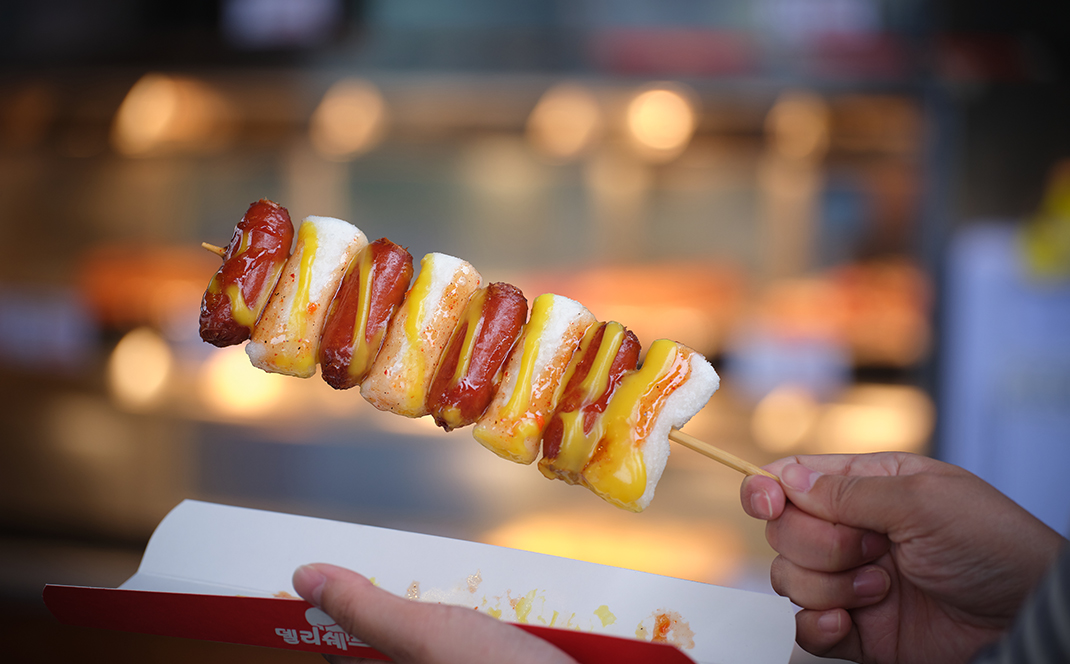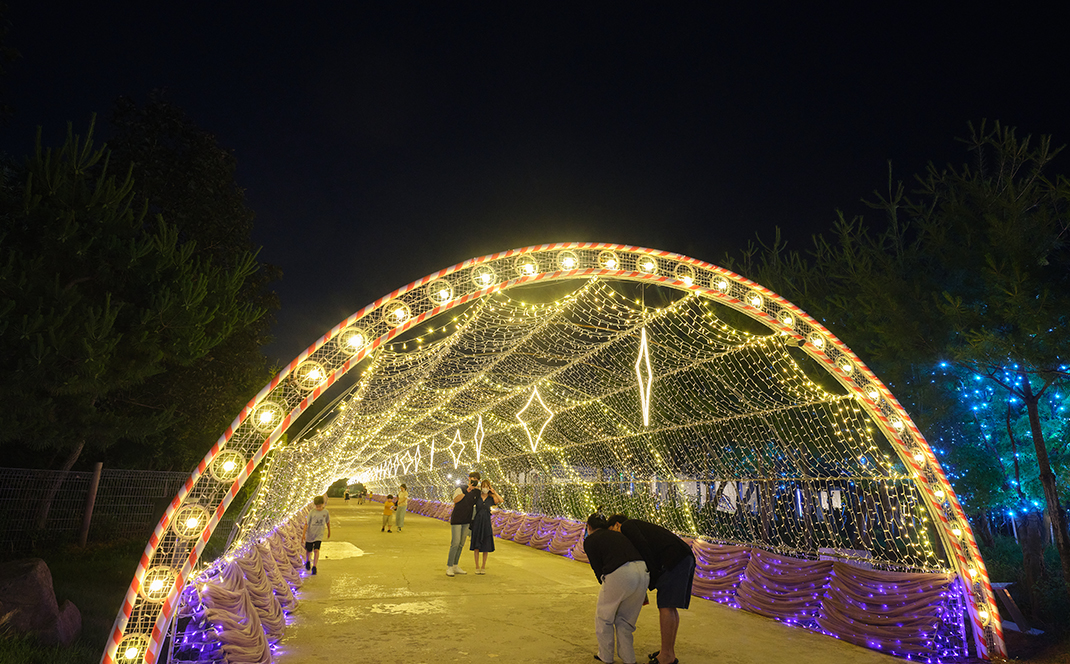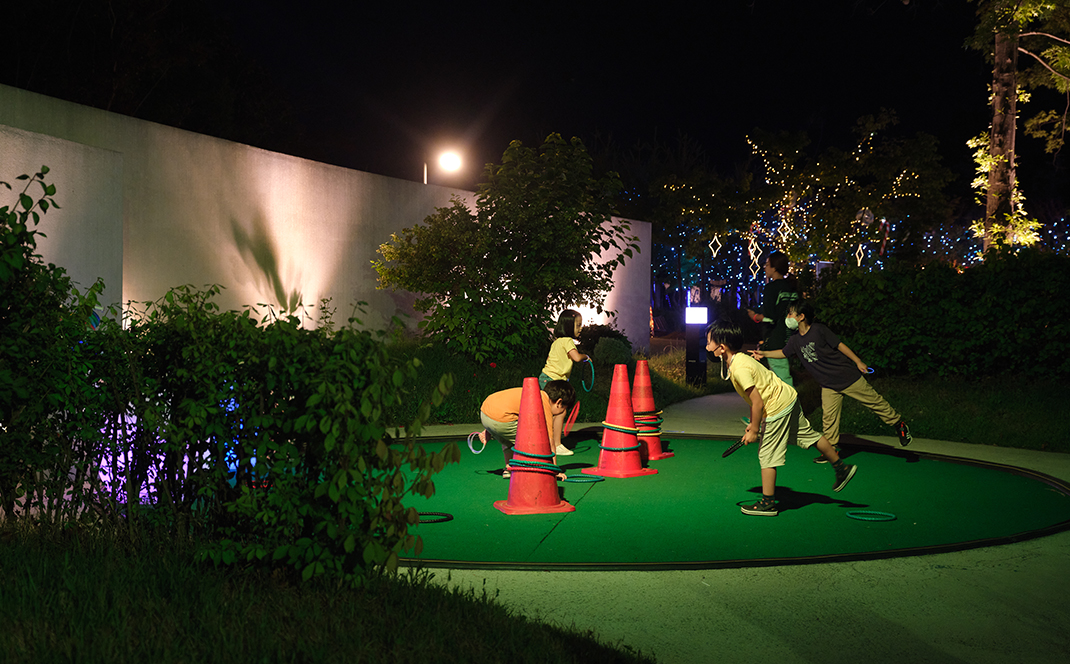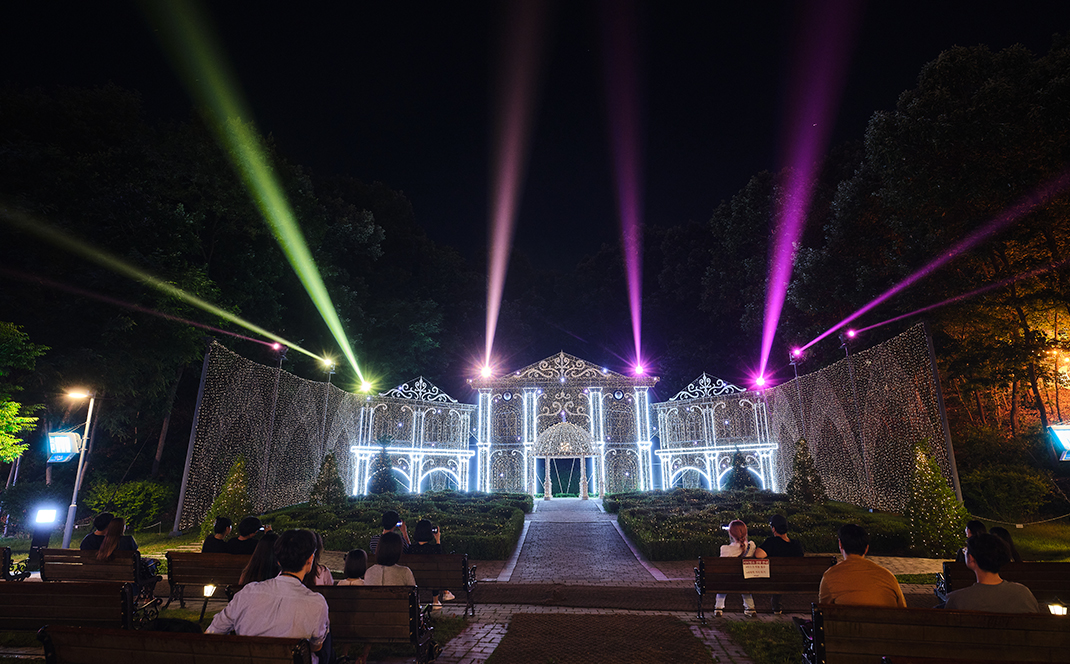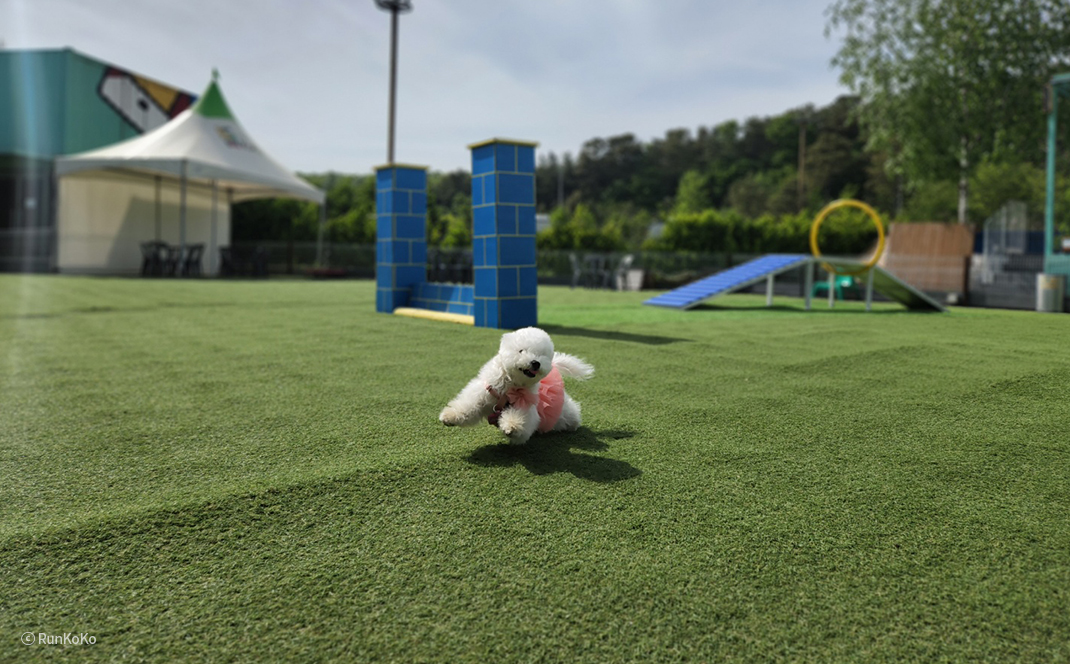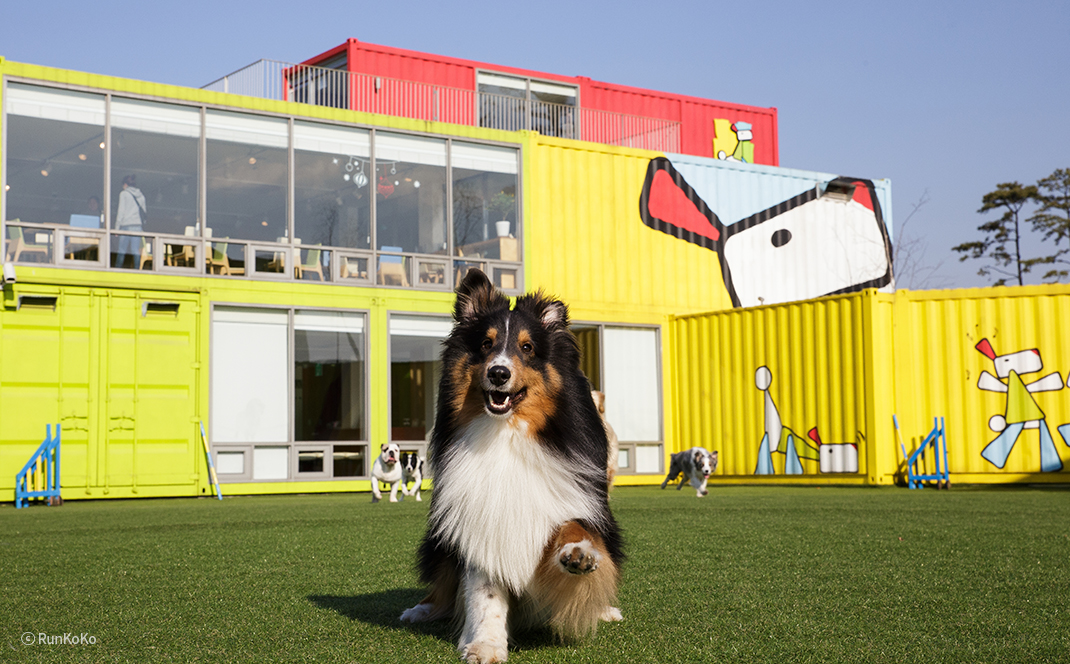Joy
on the Road
From Brief Stopovers to Fun Places to Visit

WRITTEN BY
Bae Jong-yeop,
director of Institute of Korean Expressway Rest Area Culture Improvement
Photographed by
Studio Kenn
Rest areas give drivers a place to rest during long road journeys. However, they are much more than facilities for getting something to eat, using the bathroom or taking a quick break. Rest areas are now integral to the travel experience, and fascinating destinations in their own right.
In the past, Korea’s rest areas offered the opportunity to experience the country’s bbali bbali (hurry, hurry!) culture up close. Before private cars were common in the country, people took express buses to travel from one place to the next. Rest areas were always very busy places during this era. Buses would stop at rest areas for just 10 minutes, and riders would quickly go to the bathroom, grab a bite to eat , or use the public phones. Rest areas in this era were no more than stopovers during a long journey.
From a Stopover to a Travel Destination
More recently, however, rest areas have moved beyond being places to briefly stop. They are becoming locations where people can enjoy themselves. There are several reasons for this shift. First, private cars are much more commonplace these days. Private car owners, rather than express bus riders, are now the biggest consumers of rest areas. People with their own cars are not pressured to leave rest areas quickly; they can take time to enjoy their visit. As a result, many rest areas have shifted to become places where people can rest and relax.
The changes in who uses rest areas is connected with their privatization. Private companies now operate rest areas while the Korea Expressway Corporation, which manages the buildings located in rest areas, conducts evaluations on how well these companies are managing their locations. The companies have to actively improve the environment of their rest areas in order to attract customers and ensure they do not fall short during their evaluations.
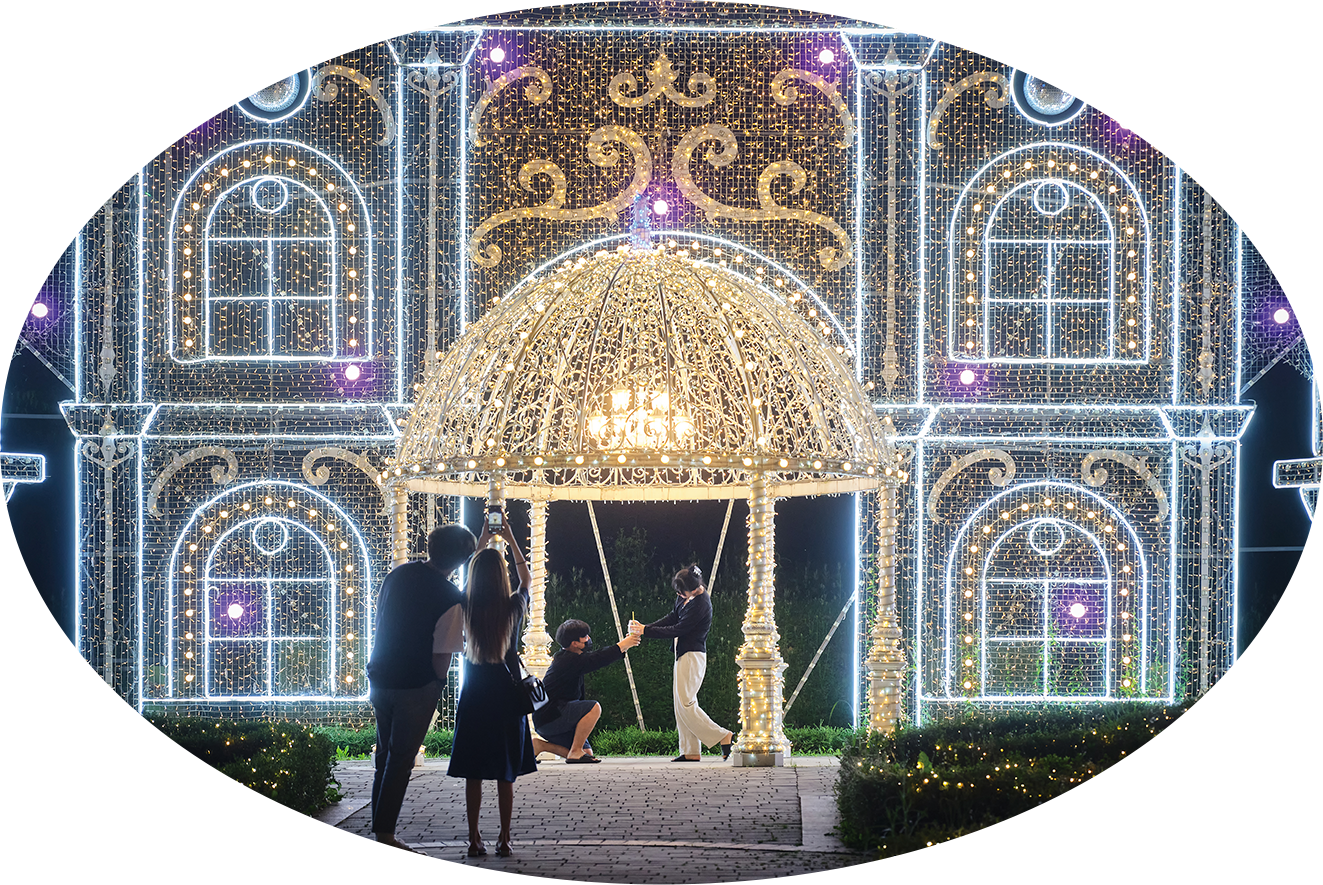
Visitors take in Deokpyeong Eco-Service Area’s OOOZOOO Illumination Park.
Korea’s rest areas have already improved a great deal thanks to the 1988 Seoul Olympics and the 2002 World Cup. Thanks to these international events, most rest areas began selling a variety of food to eat and kept their bathrooms clean. More recently, however, just offering a wide range of food or clean bathrooms is not enough to stay competitive; many rest areas have tried to set themselves apart by offering visitors something new and exciting.
Some rest areas have done this by highlighting the specialties of their particular locales. They encourage visitors to indirectly experience the local culture by holding exhibits featuring local cultural items or make food using local specialties. In fact, many rest areas are increasingly becoming “cultural spaces” where visitors can shop at outlets or enjoy theme parks.
As a result of these efforts, a new phenomenon has emerged where people embark on trips just to visit particular rest areas. In short, what were once just places to pass through on the road to somewhere else have now become the final destinations for many travelers.

Deokpyeong Eco-Service Area’s outlet accounts for 40 percent of the rest area’s sales.
Rest Area? It’s a Theme Park
Of all Korea’s unique rest areas, the Deokpyeong Eco-Service Area boasts the country’s highest revenue. Created from a site abandoned during construction work to straighten out a nearby expressway, the rest area allows access to drivers on both sides of the highway.
The Deokpyeong Eco-Service Area provides visitors with outlets to shop and even a theme park to enjoy. Currently, the rest area boasts 30 clothing shops. That 40% of its profits come from clothing sales means that it has gone beyond the rest area’s traditional role of providing a place for drivers to rest during their journeys.
Visitors find that it is particularly fun to visit the Deokpyeong Eco-Service Area in the summertime. The rest area has a garden that allows visitors to relax in nature; meanwhile, at night, visitors can enjoy the “OOOZOOO Illumination Park.” This section of the rest area features colorful exhibits of media art and sculptures, a “universe playground” for kids, and a lighted tunnel for couples to walk through. The Deokpyeong Eco-Service Area is in the greater Seoul area, making it a popular place for people to visit during the summer, too.
Continuing Transformations
The transformation of Korea’s rest areas continues. For example, the Deokpyeong Eco-Service Area created a theme park for dogs because of the greater number of people travelling with their furry friends. The rest area also features a hospital, mini-golf area, and even a place for people to camp in their cars.
The transformation of rest areas has opened a new era in travel, an era where the rest area is no longer simply a place on the way.

Visitors take in Deokpyeong Eco-Service Area’s OOOZOOO Illumination Park.
Other Articles
-
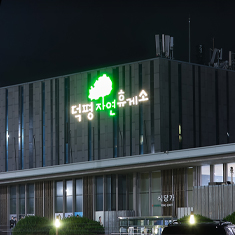
Special Ⅰ Joy on the Road
-

Special Ⅱ Rethinking
the Tourist Rest Area -
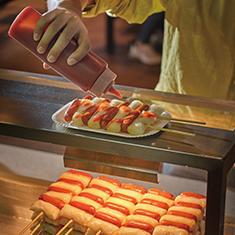
Trend A Time-honored Taste
-
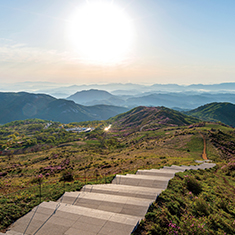
Hidden View An Open Field
in the Mountains -

Interview Making New History
-
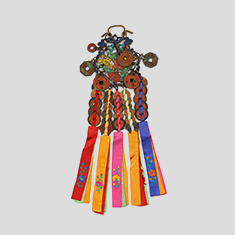
Art of Detail Delightful Decorations
-

Film & TV The Irony Continues
-

Collaboration Reality Through ‘Fake Art’
-
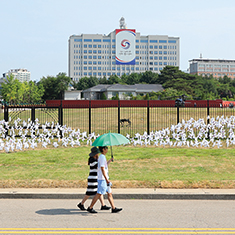
Current Korea The Yongsan Era Begins
-

Global Korea KCC Vietnam’s
1st Speech Contest

